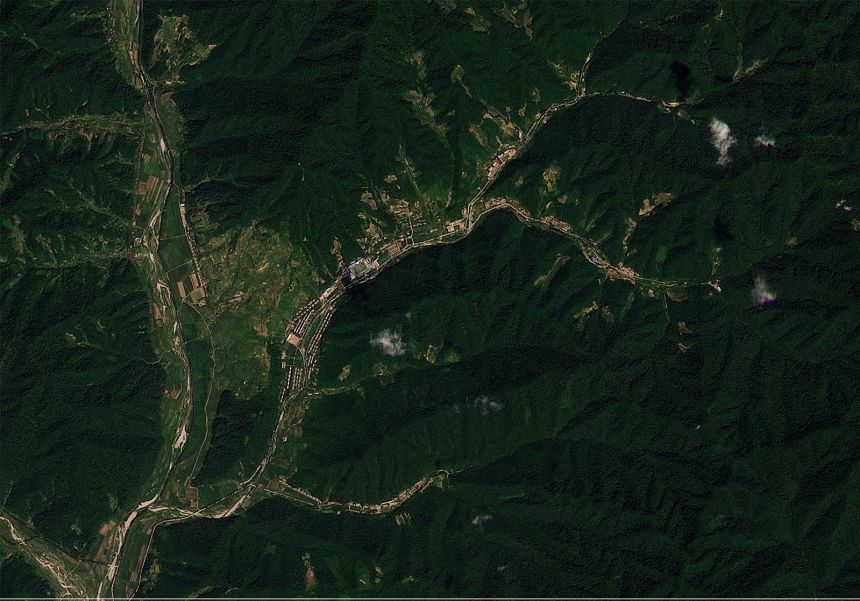
A newly uncovered missile base in North Korea, previously unknown to the international community, is located near the country’s northern border with China, potentially posing a “nuclear threat” to East Asia and the United States, according to a report released Wednesday.
The Sinpung-dong missile facility sits just 27 kilometers (about 17 miles) from the Chinese border. Analysts believe it could house up to nine nuclear-capable intercontinental ballistic missiles (ICBMs) along with their mobile launchers, according to the report from the Washington-based think tank, the Center for Strategic and International Studies (CSIS).
The report suggests that this base is part of a network of 15 to 20 ballistic missile installations and warhead storage sites that North Korea has never disclosed. Researchers arrived at their findings through satellite imagery analysis, interviews with North Korean defectors and officials, declassified documents, and open-source intelligence.
“These missiles present a potential nuclear threat to East Asia and the continental United States,” the report warned, emphasizing the growing security concerns posed by Pyongyang’s secretive missile programs.

North Korea has significantly accelerated its weapons program in recent years under leader Kim Jong Un, modernizing its armed forces, developing new weapons, and testing intercontinental ballistic missiles (ICBMs) capable of striking almost anywhere in the United States.
These actions violate United Nations sanctions that strictly restrict North Korea’s access to weapons and materials. Meanwhile, Pyongyang has also strengthened cooperation with Russia following Moscow’s invasion of Ukraine, sending troops to fight on the frontlines, raising concerns that Russia could help enhance North Korea’s technology and supply chains in return.
A recently revealed secret missile base, located near the northern border with China, is part of North Korea’s ongoing nuclear expansion. The Sinpung-dong facility sits in a narrow mountain valley bisected by a stream, covering 22 square kilometers (about 5,436 acres) — larger than New York’s John F. Kennedy International Airport. Its proximity to China provides a geographical advantage, as potential attacks could risk fallout affecting Chinese territory.
“By building bases so close to China, North Korea may leverage Beijing’s political uncertainty to deter an attack,” said Leif-Eric Easley, a professor at Ewha University in Seoul. He added that public awareness of such bases could also increase Chinese scrutiny of North Korea’s strategic moves.
Construction of the base began in 2004 and it has been operational since 2014. Satellite imagery indicates the facility is well-maintained and continues to be actively developed. While the exact missile models are uncertain, analysts believe it likely houses nuclear-capable Hwasong-15 or Hwasong-18 ICBMs, along with transporter-erector-launchers (TELs) that allow missiles to be quickly moved and launched from dispersed locations.
The base includes multiple facilities, such as checkpoints, headquarters, warehouses, missile support buildings, and housing units, some of which are deliberately camouflaged with vegetation. CSIS researchers note that the base is part of North Korea’s larger “missile belt,” contributing to the country’s evolving ballistic missile strategy and expanding strategic-level nuclear deterrence.
North Korea is estimated to possess 40–50 nuclear warheads, along with delivery systems capable of reaching regional targets and potentially the US mainland. In recent years, Kim Jong Un has intensified rhetoric threatening to use nuclear weapons against South Korea if provoked, underscoring the ongoing security risks posed by Pyongyang’s secretive nuclear and missile programs.